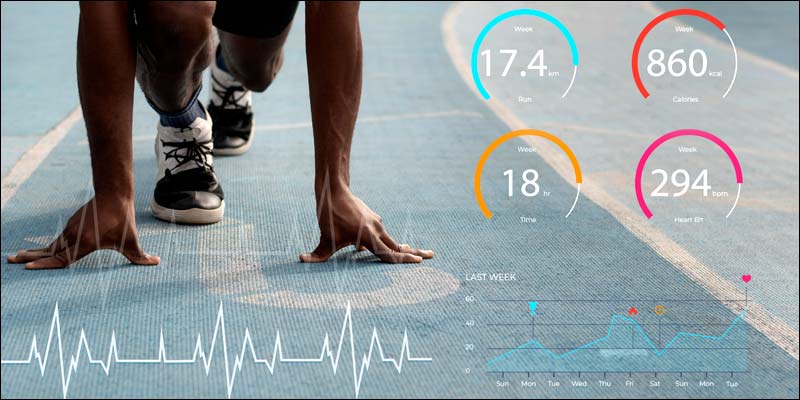So, you’ve decided it’s time to shed those extra pounds, and you’re considering running as your primary exercise. Congratulations! Running can indeed be a highly effective way to lose weight when done correctly. In this comprehensive guide, we’ll delve into everything you need to know about using running as a tool for weight loss.
Understanding the Basics of Weight Loss
Before we dive into the specifics of running for weight loss, it’s essential to understand the basics. Weight loss occurs when you burn more calories than you consume. This is often achieved through a combination of dietary changes and increased physical activity.
Why Choose Running?
Running offers several advantages for weight loss. First and foremost, it’s a highly efficient calorie-burning exercise. Even at a moderate pace, running can torch a significant number of calories in a relatively short amount of time. Additionally, running is accessible to almost everyone and requires minimal equipment – all you need is a good pair of running shoes.
Best Type of Running for Weight Loss
The optimal type of running for weight loss varies depending on your fitness level and goals. Here’s a breakdown:
Base Run
These are moderate-length runs at a comfortable pace. Example: 5 miles at your usual pace.
Progression Run
Start at your natural pace and gradually increase speed. Example: 5 miles at your usual pace, followed by 1 mile faster.
Long Run
Increase distance gradually to build endurance. Example: 10 miles at your usual pace.
Intervals
Alternate high-intensity sprints with lower-intensity jogging or walking. Example: 5 sets of 100-meter sprints followed by 20-minute jogs.
Tempo Run
Sustain your fastest possible pace for a set distance. Example: 3 miles at your fastest sustainable pace. While not ideal for beginners, increasing speed can boost calorie burn. For instance, a 155-pound person burns 298 calories in a 30-minute run at 5 mph, compared to 372 calories at 6 mph.
Getting Started with Running
Before hitting the pavement, it’s essential to have the right gear. Invest in a good pair of running shoes that provide adequate support and cushioning to prevent injuries. Additionally, choose comfortable clothing that allows for unrestricted movement. Setting realistic goals is key to staying motivated. Start with manageable distances and gradually increase intensity and duration as your fitness improves.
Does Running Help Burn Fat?
Apart from simply creating a calorie deficit, running may also boost fat burning temporarily through a process known as excess post-exercise oxygen consumption (EPOC). After engaging in taxing physical activities like running, the body requires time to replenish the energy expended, resulting in a slightly heightened calorie burn post-workout. The effects of EPOC typically endure for approximately 30 to 180 minutes after exercising.
Furthermore, the increased energy expenditure associated with more vigorous exercises like running could potentially lead to greater weight loss compared to more moderate forms of physical activity. According to a study spanning several years published in Medicine and Science in Sports and Exercise, individuals who incorporated running into their routine tended to have a lower body mass index (BMI) compared to those who solely relied on walking.
The Importance of Nutrition
While running can undoubtedly aid in weight loss, nutrition plays an equally crucial role. Fueling your body with the right foods ensures that you have the energy needed for your runs and supports recovery and muscle growth. Focus on whole, nutrient-dense foods such as fruits, vegetables, lean proteins, and whole grains, while limiting processed foods and added sugars.
Health Benefits of Running

Apart from the potential for weight loss, running offers a range of physical and mental benefits.
Enhanced Cardiovascular Health
“Running is an excellent way to boost cardiovascular fitness,” notes Hnatiuk. A significant study published in the Journal of the American College of Cardiology, involving a large cohort of runners, found that engaging in just five to 10 minutes of slow-paced running daily could lower the risk of cardiovascular disease. Compared to non-runners, participants in the study were approximately 50% less likely to succumb to cardiovascular-related causes.
Improved Lung Capacity
Aerobic activities like running can fortify the lungs and enhance the body’s ability to supply oxygen to muscles efficiently, as stated by the American Lung Association. Essentially, as a runner’s fitness improves, they are less likely to experience breathlessness during demanding workouts.
Decreased Risk of Chronic Diseases
Running has the potential to decrease the likelihood of developing chronic ailments. According to the CDC, regular physical activity may reduce the overall risk of conditions such as type 2 diabetes, dementia, and depression, among others.
Enhanced Mental Well-being
A review published in Environmental Research and Public Health in 2020 suggests that running could positively impact mental health by alleviating symptoms of depression and anxiety. However, this study lacked diversity among participants and control measures, indicating the need for further research to validate this correlation.
Conclusion
In conclusion, running can be an excellent tool for weight loss when approached with the right mindset and strategy. By combining regular running workouts with a balanced diet and realistic goals, you can achieve sustainable weight loss and improve your overall health and well-being. So lace up those running shoes, hit the pavement, and start your journey to a healthier, fitter you!
FAQs
Q1. Can I lose weight by running for 30 minutes?
Running falls under the category of cardiovascular exercise, boosting and sustaining your heart rate over a duration. Under optimal conditions, it can torch up to 671 calories in just half an hour. Aerobic cardiovascular activities, such as running, offer numerous physical and mental benefits.
Q2. Can I lose belly fat by running?
Moderate-intensity jogging and high-intensity running variations like variable running, uphill running, sprinting, or HIIT coupled with running are notably efficient at reducing belly fat, even without altering one’s diet.
Q3. Can you slim down by running?
Running aids in burning belly fat and shedding weight, as it continues to torch calories for several hours post-workout. Additionally, it assists in curbing cravings and contributes to overall well-being. It’s no wonder that running remains an immensely popular form of exercise.

